What's New
Displaying results 3131 - 3140 of 4052
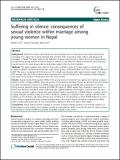
Resource | Publications,
Despite the grave consequences of sexual violence, and it’s persistence both within and outside marriages, this subject has received relatively little attention from researchers, policy makers, and programme managers in Nepal. This paper explores the definition of sexual violence and its various forms and consequences as reported by young married women in Nepal. In addition, it describes the coping mechanisms used by young married women to avoid sexual violence perpetrated against them by their husbands.
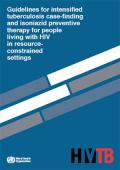
Resource | Guidelines,
HIV is the strongest risk factor for developing tuberculosis (TB) disease in those with latent or new Mycobacterium tuberculosis infection. The risk of developing TB is between 20 and 37 times greater in people living with HIV than among those who do not have HIV infection. TB is responsible for more than a quarter of deaths in people living with HIV.
On 25–27 January 2010, WHO conducted a global policy meeting to review the evidence regarding ICF and IPT, and to reconceptualize the 1998 WHO/Joint United Nations Programme on HIV/AIDS (UNAIDS) Policy on TB prevention. Key questions were identified and a comprehensive review of the available scientific evidence was conducted to formulate the recommendations.
The final recommendations take into consideration the quality of evidence, cost, feasibility, and values and preferences of the community and health-care workers.
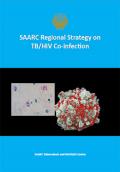
Resource | Publications,
Tuberculosis (TB) and HIV/AIDS are the two major public health problems in the South Asian Association for Regional Cooperation (SAARC) region. In the field of TB control DOTS strategy has made a remarkable progress, however, emerging HIV epidemic has posed a major challenge to TB control efforts.
This is a revised edition of "SAARC Regional Strategy on TB/HIV Co-infection" which presents an outline of regional strategy focused on areas of collaboration and directed towards the development and implementation of successful programmes for control of TB/HIV co-infection. This document highlights the SAARC regional context and points out major TB, HIV/AIDS and TB/HIV co-infection status and concerns, outlines strategy goal, objectives and expected outcomes. This document also explains the Strategy on the basis of its five different components.
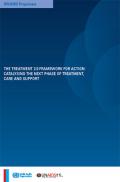
Resource | Publications,
In June 2010, the UNAIDS Secretariat and WHO launched Treatment 2.0, an initiative designed to achieve and sustain universal access and maximize the preventive benefits of antiretroviral therapy (ART). Treatment 2.0 builds on '3 by 5' and the programmatic and clinical evidence and experience over the last 10 years to expand access to HIV diagnosis, treatment and care through a series of innovations in five priority work areas: drugs, diagnostics, costs, service delivery and community mobilization. The principles and priorities of Treatment 2.0 address the need for innovation and efficiency gains in HIV programmes, in greater effectiveness, intervention coverage and impact in terms of both HIV-specific and broader health outcomes.
Since the launch of Treatment 2.0, the UNAIDS Secretariat and WHO have worked with other UNAIDS co-sponsoring organizations, technical experts and global partners to further elaborate and begin implementing Treatment 2.0.

Resource | Presentations,
HIV Testing & Treatment as Prevention in China
National Center for AIDS/STD Control and Prevention
Chinese Center for Disease Control and Prevention

Resource | Publications,
Papua New Guinea (PNG) is a low income country that has experienced a rapidly expanding HIV epidemic. It has the highest HIV prevalence and incidence rate in the Pacific region with 28,294 HIV infections reported by December 2008 since the first diagnosed case in 1987. The vast majority of HIV cases have been due to heterosexual transmission with similar numbers of diagnoses in men and women. Fortunately, recent estimates suggest there has been a leveling out of HIV prevalence in PNG at approximately 1%. The reasons for this leveling of prevalence are currently unknown but could be due to the saturation of HIV in particular at risk population groups or geographic areas, or reflect the impact of the roll-out of intervention programs in recent years and the successful scale-up of antiretroviral therapy (ART) services across the country. ART first became available in PNG in 2004 and the PNG National Department of Health recently estimated that more than 70% of people requiring treatment were receiving it in 2009.
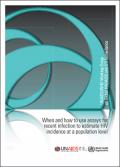
Resource | Publications,
It is more than a decade since the first report appeared of a laboratory test aimed at distinguishing recently acquired HIV infections from infections of a longer duration. Several expert groups have now developed tests of this kind, based on the underlying principle that the immunological response to HIV infection evolves for a number of months following infection, and that it is possible to identify a marker for the early period. This marker eventually disappears and can therefore serve as an indicator of recent infection. For the purpose of these tests, “recent” generally means a period of up to a year after infection has been acquired.
The document reviews the public health importance of estimating the HIV incidence in populations, and the various methods that have been used for this purpose. It provides guidance on the way in which laboratory tests for recent HIV infection may be used to estimate HIV incidence in populations, particularly with regard to sampling designs, sample size and the statistical analyses that should be employed.
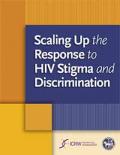
Resource | Publications,
HIV stigma and discrimination adversely affect every aspect of life for people living with HIV and their families. In many settings, an HIV diagnosis still can be as devastating as the illness itself, leading to job loss, school expulsion, violence, social ostracism, loss of property, and denial of health services and emotional support. People living in fear are less likely to adopt preventive behavior, come in for testing, disclose their sero-status to others, access care and adhere to treatment.
At present, the building blocks are in place for scaling up the response to stigma and discrimination. Promising tools and approaches are available. Practitioners know how to inspire change in communities, health care settings and workplaces. There is a core agenda for legal reform to establish better protections for people living with HIV, guarantee their human rights and banish laws that discriminate against people living with HIV.
This brief lays out the rationale for intensified action, and what can—and must—be done to reduce HIV stigma and discrimination worldwide.

Resource | Publications,
This People Living with HIV Stigma Index study is the first study of this kind that has been conducted on such a comprehensive scale among people living with HIV (PLHIV) in Nepal. HIV and AIDS-related stigma and discrimination exists worldwide and varies only in intensity across countries, communities and individuals. HIV stigma and discrimination together have long been recognized as one of the main obstacles to the prevention, care and treatment of HIV and AIDS.
Stigma remains the primary barrier to public action; on a personal level, it can make individuals reluctant to access HIV testing, treatment and care. The PLHIV stigma index aims to collect information regarding the experiences of PLHIV related to stigma, discrimination, knowledge of their rights and violation of those rights. Currently, over 40 countries across the world, including Nepal, have joined this research.
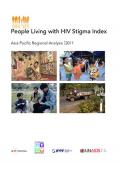
Resource | Publications,
This report provides findings from the rollout of the People Living with HIV Stigma Index (PLHIV Stigma Index) in nine countries in the Asia/Pacific Region (Bangladesh, Cambodia, China, Fiji, Myanmar, Pakistan, Philippines, Sri Lanka, and Thailand). It provides the first large-scale regional comparison of standardised HIV-related stigma indicators. The results represent an extraordinary effort by people living with HIV, PLHIV organisations and supporting domestic and international agencies.





